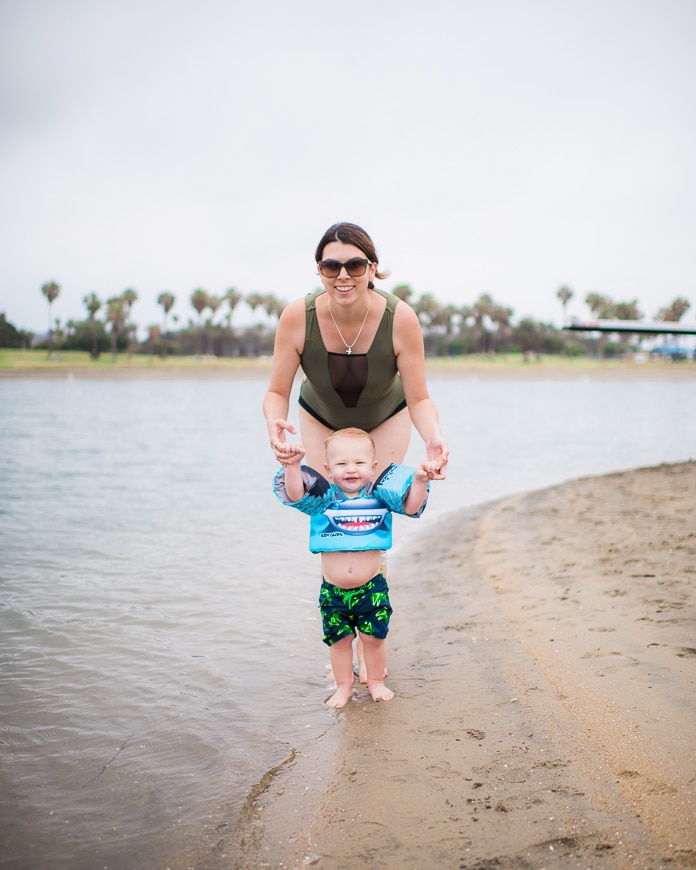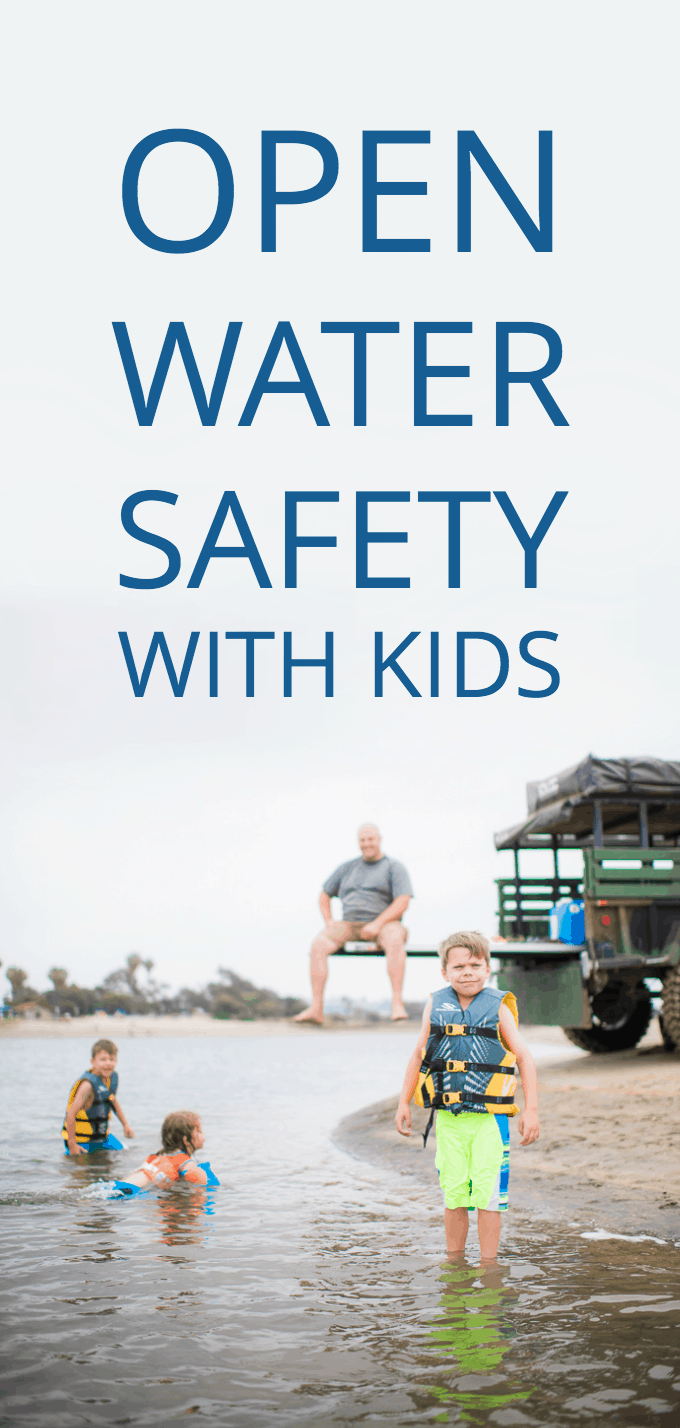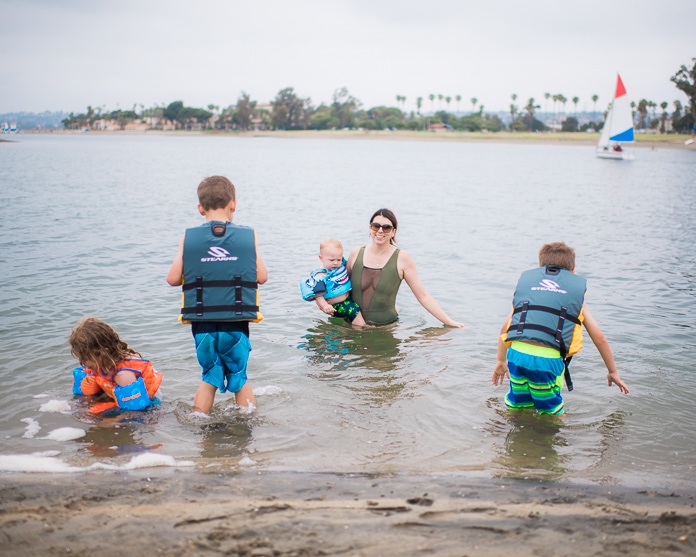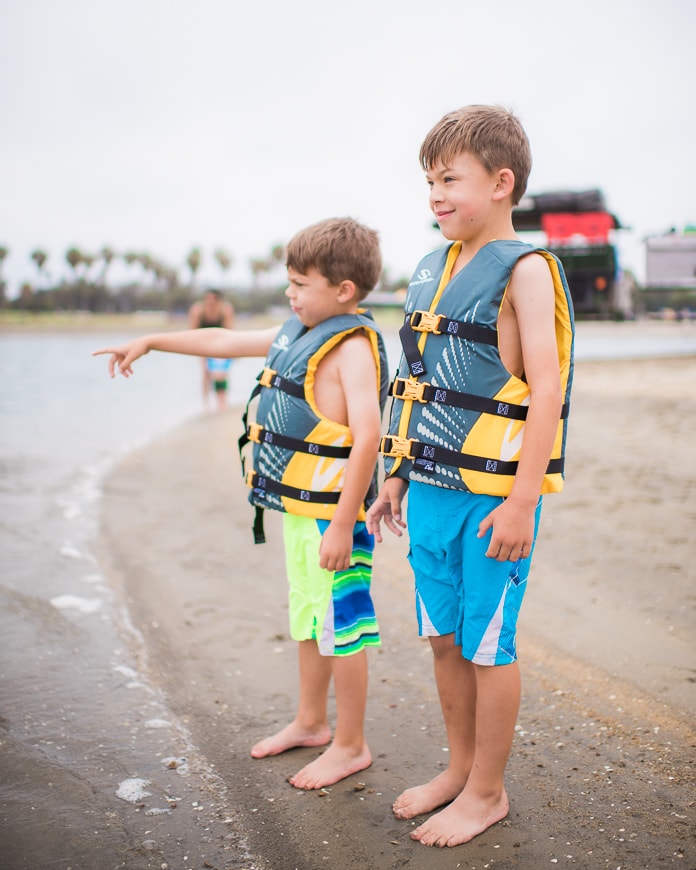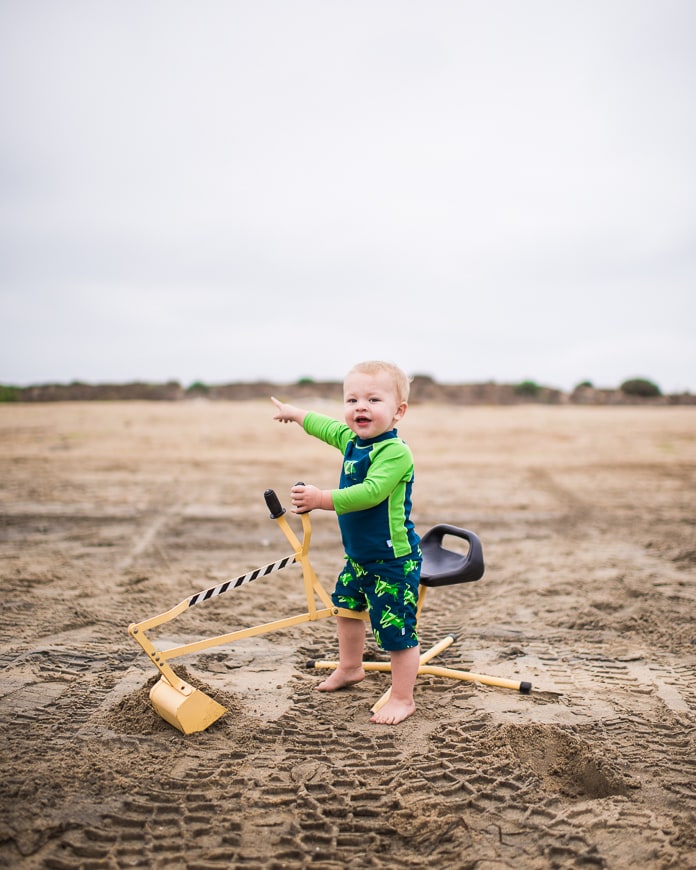This post is sponsored in partnership with Nationwide’s Make Safe Happen Program. All opinions are my own.
Hooray, it’s summer! The season of pool parties and beach bashes. In the midst of everyone’s celebrations, however, it’s a sad fact that this is when the majority of childhood drownings occur each year. Most tragedies surprisingly don’t happen in pools or bathtubs but rather in lakes, streams and oceans. Open water safety is a critical consideration this time of year.
We’re working with Nationwide’s Make Safe Happen program to share tips from their website, Makesafehappen.com, and their Make Safe Happen app to help keep your family safe in the water this season.
5 Hidden Hazards to consider for Open Water Safety
Limited Visibility
We’ve faced a lot of murky water in lakes, ponds and oceans. Hidden among sand and surf can also be rocks, logs and sudden drops – all major hazards for kids. If lifeguards are around, we ask their advice about the safest place to swim. If not, we make sure to buddy the kids up, put an adult on watch duty, keep little ones within arm’s reach, and slowly wade into the water as opposed to running quickly toward potential danger.
Depth, Distance and Drop-offs
Open water doesn’t usually have depth markings like a pool does, so it’s easy for kids to get in over their heads. They can also quickly lose track of their distance from the shore and encounter abrupt drop-offs along the way. Whenever possible, we swim in designated recreational areas that have been assessed by professionals and have any hazards clearly marked. When that’s not possible, I go in with them and always stay within arm’s reach of our boys.
Currents and Tides
Having been caught in a riptide several times myself, I’m particularly cautious about fast-moving currents in the ocean. I’ve also made the mistake of thinking that an apparently calm stream would be easy to wade in and out of, only to be caught off-guard by a sudden surge under the surface. Growing up in Hawaii, one of the first things that families taught their kids was how to hold their breath and deep-dive under a crashing wave, as well as swimming parallel to the shore instead of trying to swim directly against a riptide. Strong swimming and CPR skills are essential to learn early on.
Temperature
Open water is often deceptively cold. On a blazing summer day, the dark depths of the ocean or a lake can still be shockingly frigid. People taking a dive out of a boat or off a dock can experience shock and panic. This is why it’s so important to wear a life jacket.
Seasonal Differences
Even during the summer, rapid weather changes and heavy rain can lead to flooding. Strong changes in depth and current can occur, and debris can be swept into to water and change visibility in a heartbeat. Even when we’re hiking around a dry canal or reservoir, our family keeps a wary eye on flash flood warnings in case it suddenly fills. If we see lightning or hear thunder in the distance like we did last year in Orlando, we steer clear of water until the threat has passed.
With our boys and their tendency to go a million different directions at once, water play can quickly get exhausting. I make sure to bring a lot of toys and entertainment to keep them busy back up on the sand, away from the shore, so Nate and I can get frequent breaks from lifeguard duty.
Are you exploring a lot of lakes, streams and oceans this summer? How do you practice open water safety with your family?
